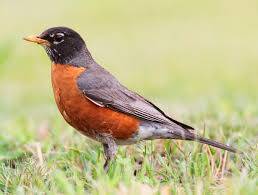 One distressing fact about the world around us is that bird numbers are plummeting. The U.S. State of the Birds 2022 report has come out discussing the top 70 bird species that are at the "tipping point" - at risk of becoming endangered. Look at the list to see if any of the bird species are found near where you live.
One distressing fact about the world around us is that bird numbers are plummeting. The U.S. State of the Birds 2022 report has come out discussing the top 70 bird species that are at the "tipping point" - at risk of becoming endangered. Look at the list to see if any of the bird species are found near where you live.
According to the Cornell Univ. researchers, the 70 "tipping point" species listed have already declined by at least 50% (or more) and could lose another half of their population in the coming years.
There are numerous reasons why bird numbers are dropping so rapidly (e.g., loss of habitat, pesticides, pollution), but there are also some positive steps you can personally take to help bird species around you survive. Additionally, this will help the environment and your own health (e.g., less pesticide exposure is good for health). Three simple steps to take:
#1 - Stop using lawn and garden pesticides. They poison birds landing on lawns, poison the insects they eat, poison critically important insect species such as bees, and also screw up lawn and garden microbial communities.
#2 - Instead, look for natural and non-toxic ways to control unwanted plants and insects. Practice IPM (Integrated Pest Management) or organic lawn and garden care. View "weeds" as wildflowers and welcome diversity.
#3 - Plant flowers and plant species that are beneficial to pollinators and birds. Plant native species.
Cornell Lab recommendations of 7 simple actions to take.
From State of the Birds 2022: Bird Declines Are Reaching a Tipping Point
In 2019, a study of 529 bird species with adequate long-term data for analysis (Science, Rosenberg et al.) found that 303 species in North America were declining—more than half of the bird species studied.
Now scientists with the Road to Recovery initiative have issued an alert for 90 declining bird species—birds that are not yet federally listed as threatened or endangered, but that have lost half or more of their breeding population since 1970. The scientists further identified a subset of 70 Tipping Point species that could lose another half or more of their populations in the next 50 years, based on recent trajectories and expert assessments.
These Tipping Point species are high priorities for science and conservation because of their high vulnerability to extinction, high urgency, and steep population declines where known. All are included on the Birds of Conservation Concern List of the U.S. Fish and Wildlife Service and/or state lists of Species of Greatest Conservation Need.
